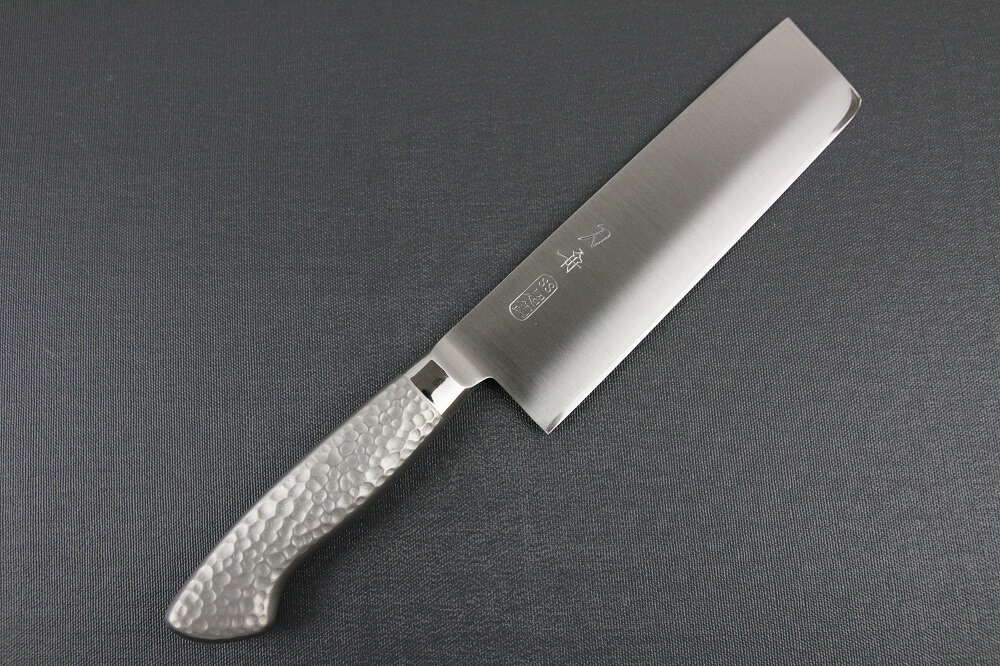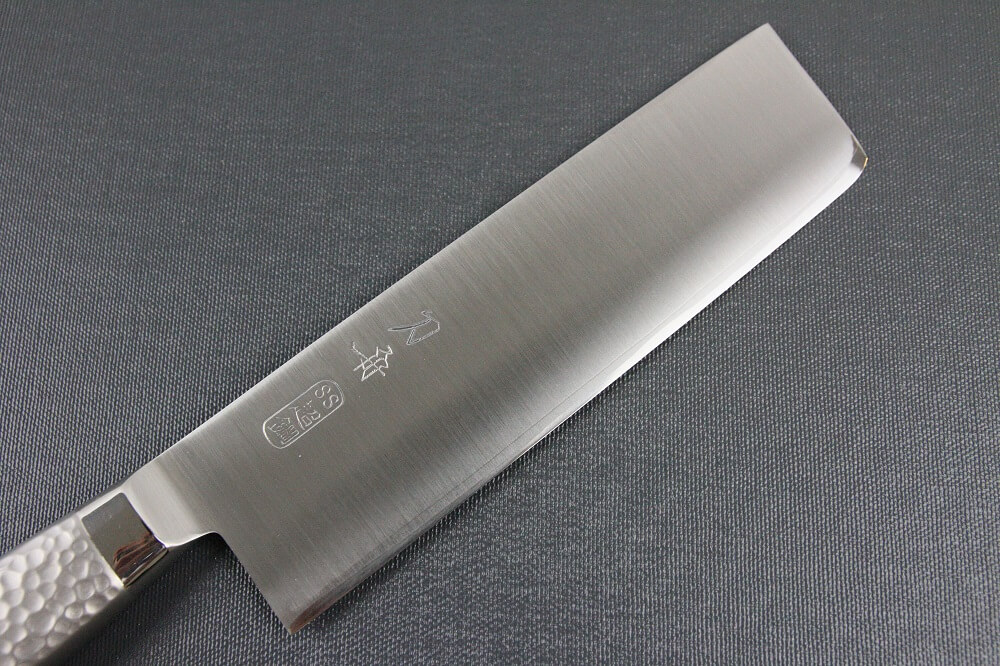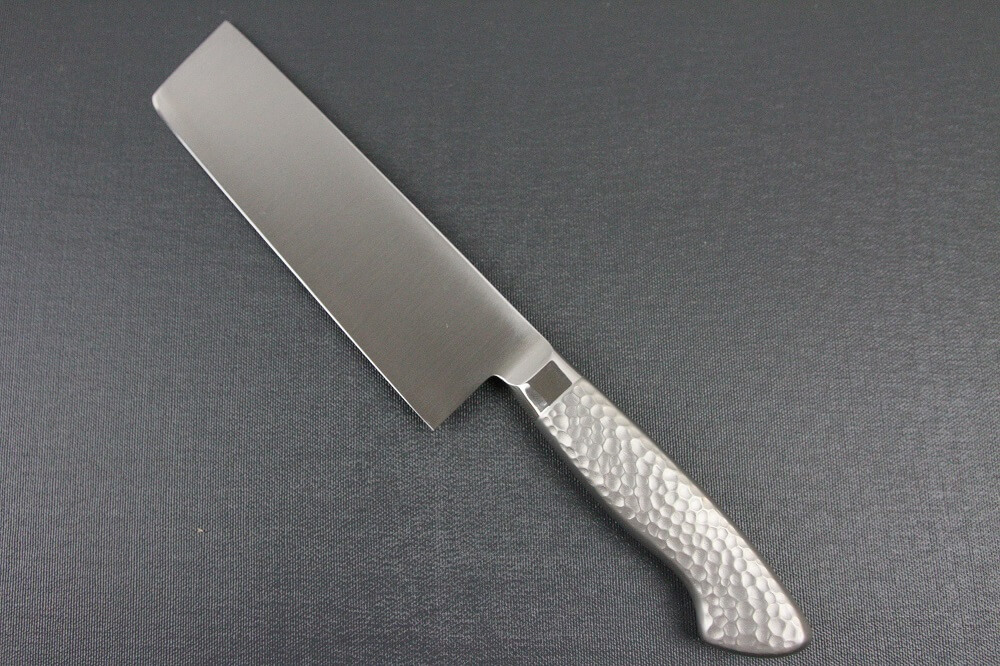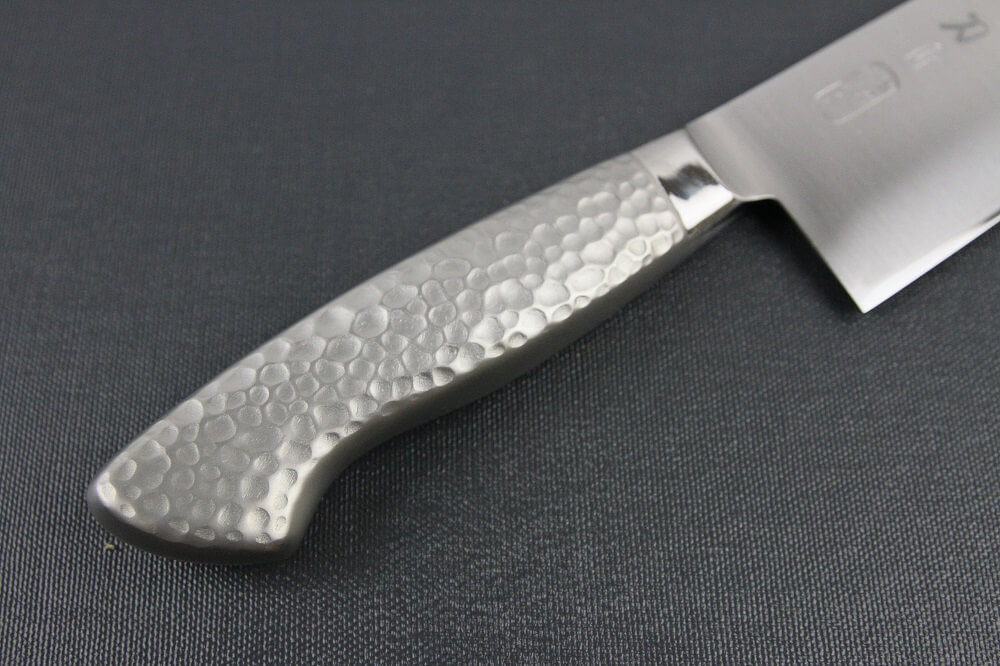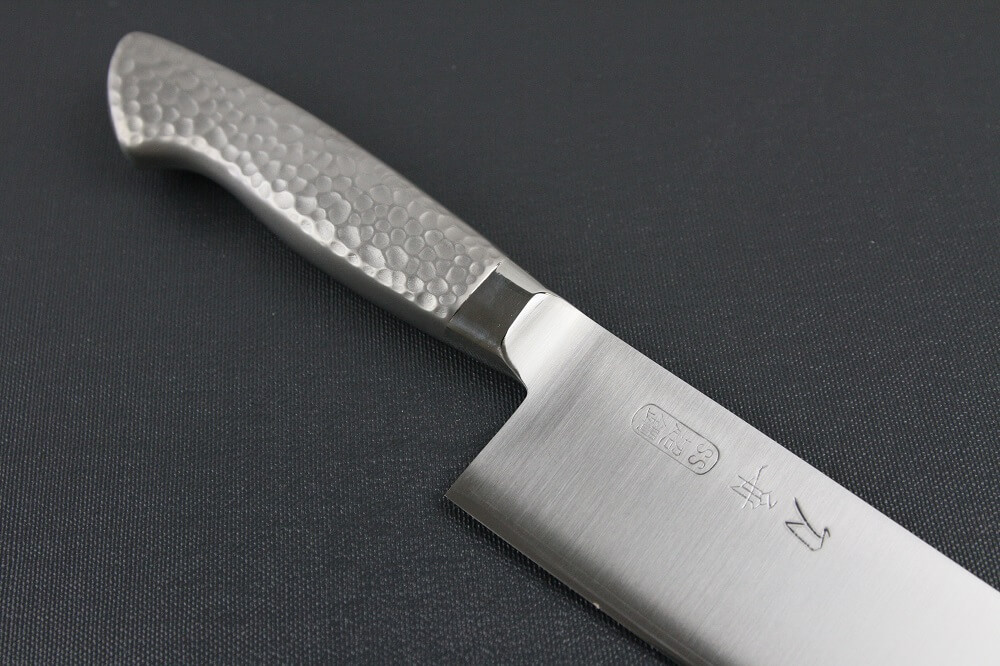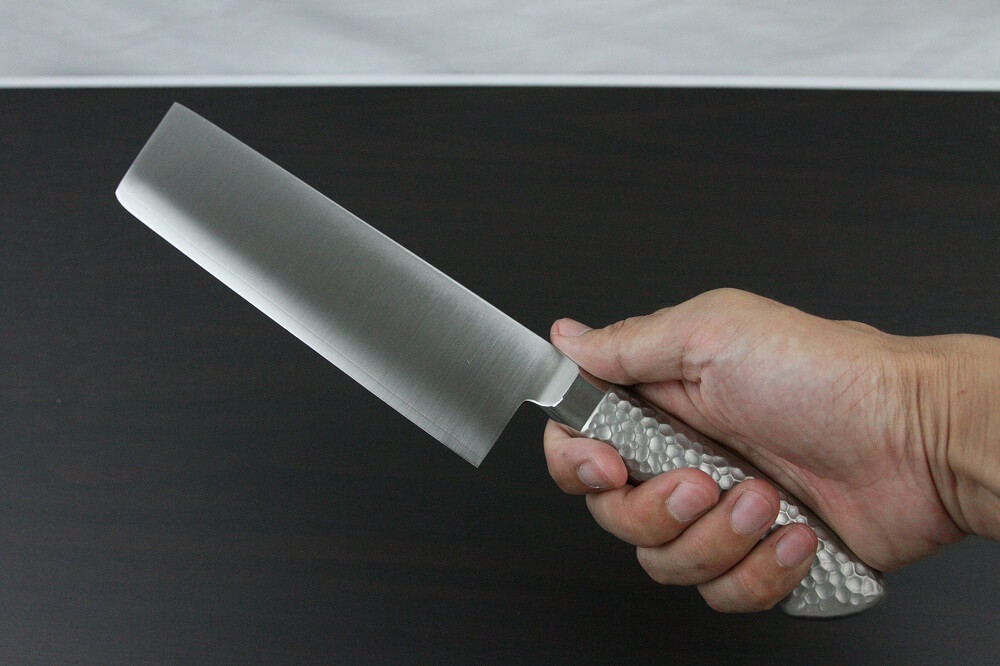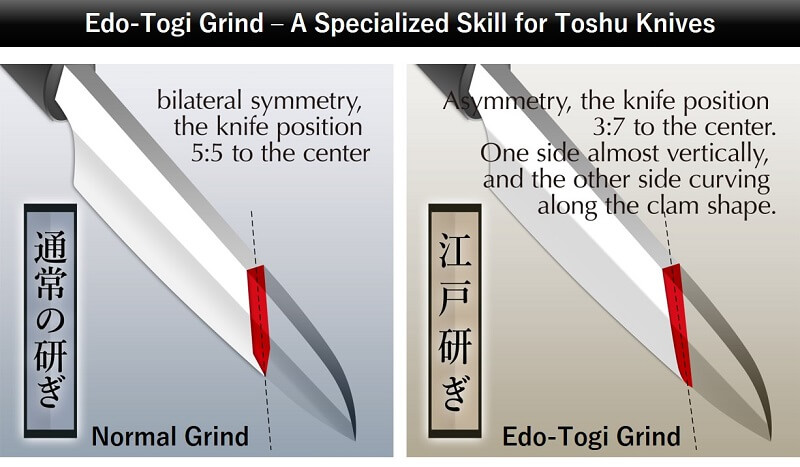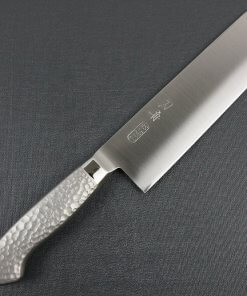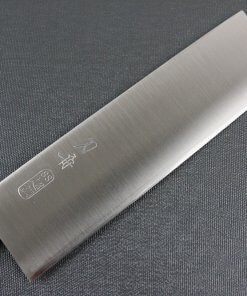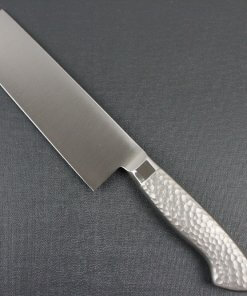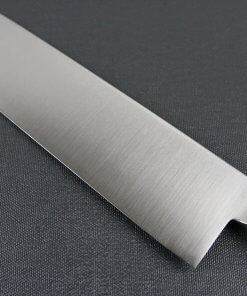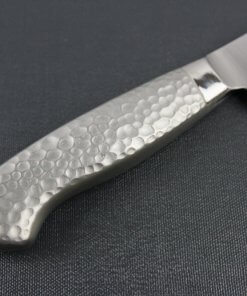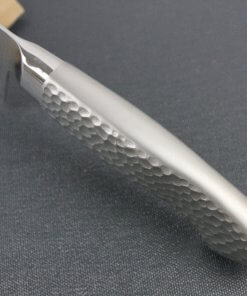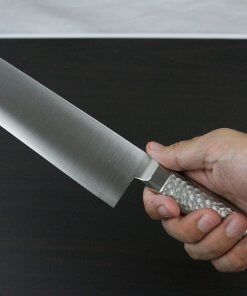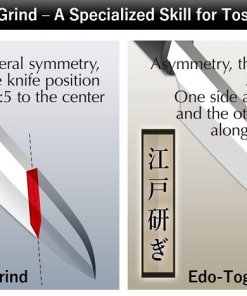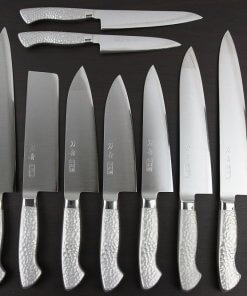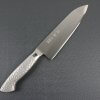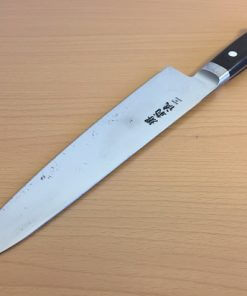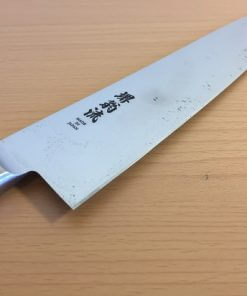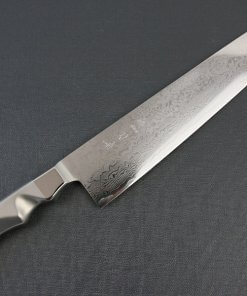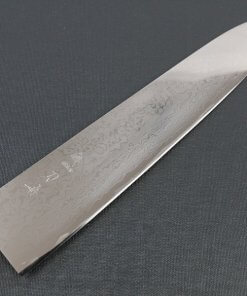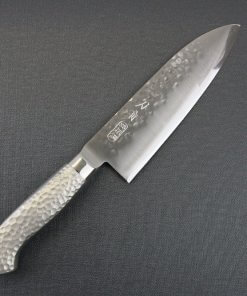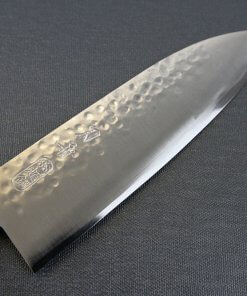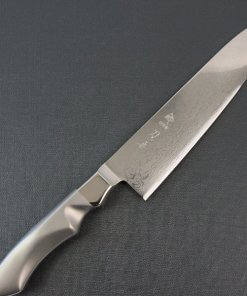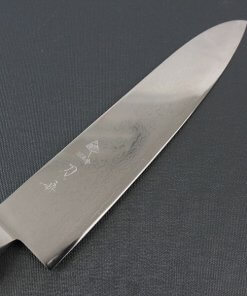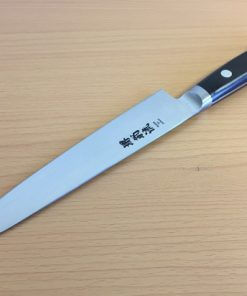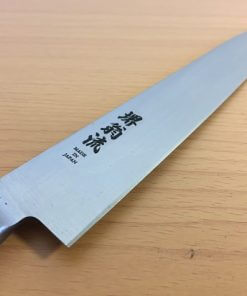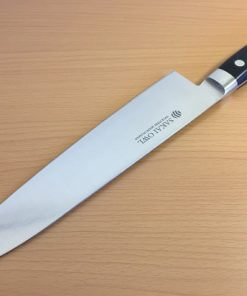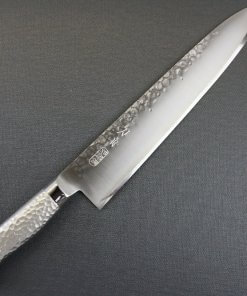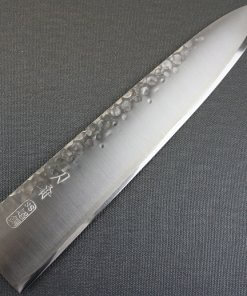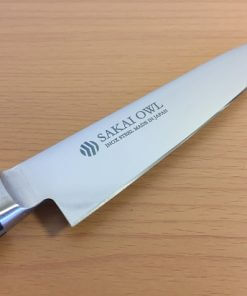Toshu Elegance Monaka, Vegetable Knife, Stainless Steel 170mm/6.7in
$163.27
Chef knives made by Toshu have all of five features that finest kitchen knives must have. Toshu makes knives using traditional Japanese swordsmiths’ techniques, “Hizukuri Forging” and “Edo-Togi grind”.
Vegetable knife (Nakiri) has ideal blade for slicing and chopping fruits and vegetables. Its long flat edge cut foods quickly and equally on cutting board. Especially for those who are vegetarians or salad lovers, this knife make it easy to prepare your dishes.
Chefs typically choose the vegitable knives to slice thin sheets of vegetables, but it can also be for meats and seafood as well.
Toshu Elegance Monaka Series is a most popular series among Toshu knives. Blade is made by three layers; high quality VG-5 steel is sandwiched by stainless steels, which makes the blade sharp and rustproof. The VG-5 stainless steel made in Takeo Metals, one of the most famous material company.
Metal handle is formed to fit your palm, so you can handle the knife smoothly. In fact, we receive highly evaluated user feedback saying the handle can be hold tightly, is easy to keep clean, and is also beautiful!
Thanks to its stainless steel materials and structure, products in this series are dishwasher safe.
The difference between Elegance Monaka series and similar looking Hammer Finish series is making process of the blade. Unique hammered patterned blades of Hammer Finish series are made by hammering after heating the blade in order to strengthen its material by forging. This Elegance series has simpler plain blade without that forging process, therefore prices are reasonable.
Full lineup of Toshu Elegance Monaka Series knives
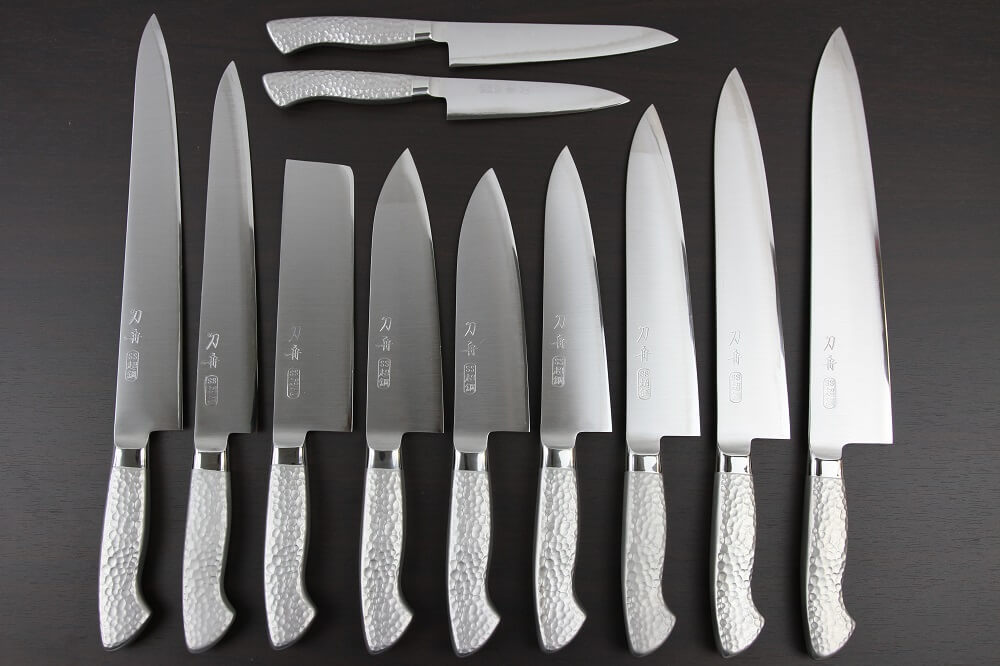
This knife has the standard vegetable knife’s blade size 170mm/6.69in and relatively light weight (approximately 170g) thanks to its light weight materials and integrated handle and blade structure.
Hizukuri Forging
This forging method is traditionally used for Japanese sword making since Samurai era. Heating material up to 1,000 degrees Celsius, craftsmen hammer the material repeatedly to make it hard and to form the shape of blade.
Edo-Togi Grind
This grinding method can be done by limited artisans because it requires high level skills. Each side of the blade is sharpen asymmetrically in this method; one side is sharpen almost vertical, whilst the other side is to form clam-like curving shape; and edge of the blade should be placed at the 3:7 position to the center. This technique gives tremendous advantages to the knives as described below.
Making Process of Toshu Chef Knives
Making knives with these traditional techniques by hands requires high level skills and takes longer time than making by machines. However, every step of the making process has important meaning and effects which has been elaborated by past artisans. Thanks to the complicated 60 steps by experienced craftsmen, Toshu knives has all of five features that finest kitchen knives must have. They are 1)hardness which affects cutting quality and makes hard to get chipped, 2)flexibility for good cutting quality, 3)abrasion resistance to keep cutting quality for longer time, 4)fatigue resistance which keeps cutting power for longer time, and 5)corrosion resistance. Once you use a Toshu knife, you’ll instantly feel the difference between our product and ordinary knives which are die cut from metal plate and mass-manufactured by machines.
In addition, Toshu knives prevent odors of the steel from spreading to foods, and fat of foods are hard to stick on the blades. Many professional chefs have used our knives regularly.
Furthermore, well-made knives are easy to be repaired. Sending back your knife to us, Toshu craftsmen are happy to repair and restore it as if it’s new. It is only possible for the handmade knives, therefore our knives can be used for many years to come.

